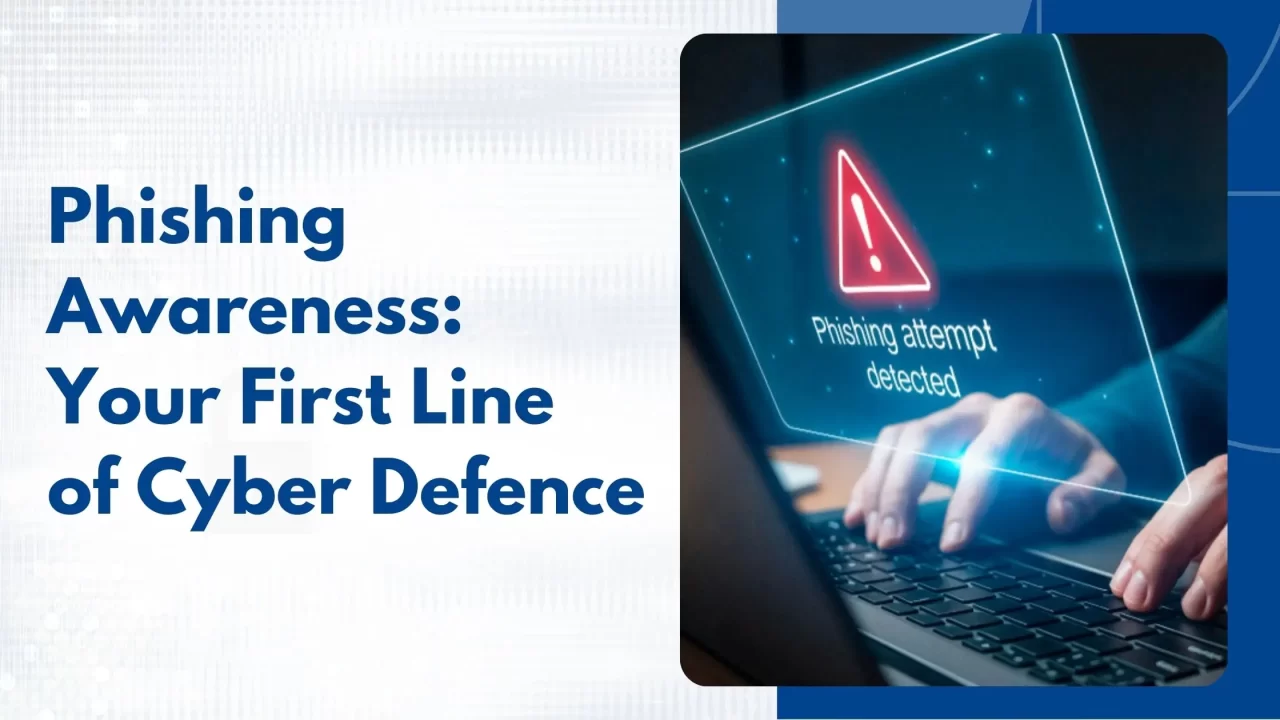Phishing remains one of the most common and successful cyberattack methods targeting businesses globally. In India, where digital adoption across sectors is booming, phishing attacks—from fake login pages to malicious email attachments—pose a growing threat.
Often disguised as legitimate communication from banks, vendors, or internal teams, phishing tricks users into revealing sensitive information or clicking harmful links. The results? Compromised credentials, financial losses, and reputational damage.
The good news: a well-trained workforce is your strongest shield. In this blog, we’ll explore the power of phishing awareness training, how to roll it out effectively, and how it fits into a robust cybersecurity strategy.
What is Phishing and Why Is It So Effective?
Phishing is a type of social engineering attack designed to trick individuals into taking unsafe actions such as:
- Clicking on malicious links
- Downloading infected files
- Disclosing personal or financial information
Phishing works because it preys on human psychology—urgency, curiosity, fear, or trust. Attackers mimic familiar brands, internal departments, or authority figures to deceive users.
Common phishing types include:
- Email phishing: Most widespread, often includes fake invoices, account alerts, or payment requests
- Spear phishing: Personalized messages targeting specific individuals or roles (e.g., CFO, HR)
- Smishing and vishing: Attacks via SMS or voice calls
- Business Email Compromise (BEC): Impersonates executives to request fund transfers or sensitive data
Why Phishing Awareness Training Is Critical
Technical tools like firewalls and antivirus are essential, but they can’t stop every phishing email. Employee awareness fills the gap. A single click can lead to massive data breaches or ransomware attacks.
Training ensures employees:
- Recognize suspicious messages and links
- Report phishing attempts promptly
- Avoid risky behaviors like reusing passwords
According to global studies, organizations that regularly conduct phishing simulations and awareness training see a dramatic drop in click-through rates on malicious links.
How to Roll Out Phishing Awareness Training
1. Begin with a Baseline Assessment
Simulate a phishing attack without prior warning to assess current risk levels. This helps identify vulnerable teams or individuals.
2. Design Engaging Training Modules
Don’t just deliver lectures. Use videos, real-life scenarios, interactive quizzes, and visual cues to help people understand:
- How to spot phishing emails
- Anatomy of a phishing message
- Reporting procedures
3. Use Periodic Phishing Simulations
Conduct surprise phishing simulations to test vigilance. Vary the format—emails, SMS, or fake job offers.
4. Reinforce With Microlearning
Use short, ongoing lessons or tips (e.g., a “Phishing Tip of the Week” email) to reinforce learning over time.
5. Reward Vigilance, Not Just Penalties
Create a positive culture around reporting. Recognize employees who correctly identify phishing attempts.
Best Practices for Effective Training Programs
- Customize Content: Tailor examples to your industry (e.g., fake supplier invoices for manufacturing firms)
- Train All Levels: Include interns to top leadership—phishing doesn’t discriminate
- Track Metrics: Measure improvement over time: click rates, report rates, and knowledge retention
- Integrate with Security Policies: Link training to larger cybersecurity practices like password management and endpoint security
How Vanaps Can Help
At Vanaps, we support businesses in:
- Conducting phishing risk assessments and baseline tests
- Delivering custom awareness training suited for Indian enterprises
- Running simulation campaigns and reporting dashboards
- Integrating phishing awareness with your broader Endpoint Security and compliance strategies
Whether you’re a 10-person startup or a 500-person organization, phishing education is scalable, effective, and a must-have.
Real-World Impact: A Missed Click Can Cost Crores
Indian businesses have seen:
- Credential harvesting: Employee emails used to launch further attacks
- Wire fraud: BEC scams leading to unauthorized transfers
- Ransomware payloads: Triggered by phishing email attachments
Most incidents had one thing in common—lack of awareness or hesitation to report suspicious emails.
Conclusion
Cybersecurity isn’t just about firewalls and software—it’s about people. A single untrained employee can unknowingly unlock the door to your entire network. But with proactive, continuous phishing awareness training, your workforce becomes your strongest defense.
Don’t wait for an incident to act. Book a free cybersecurity awareness consultation with Vanaps and empower your team to fight phishing effectively.



